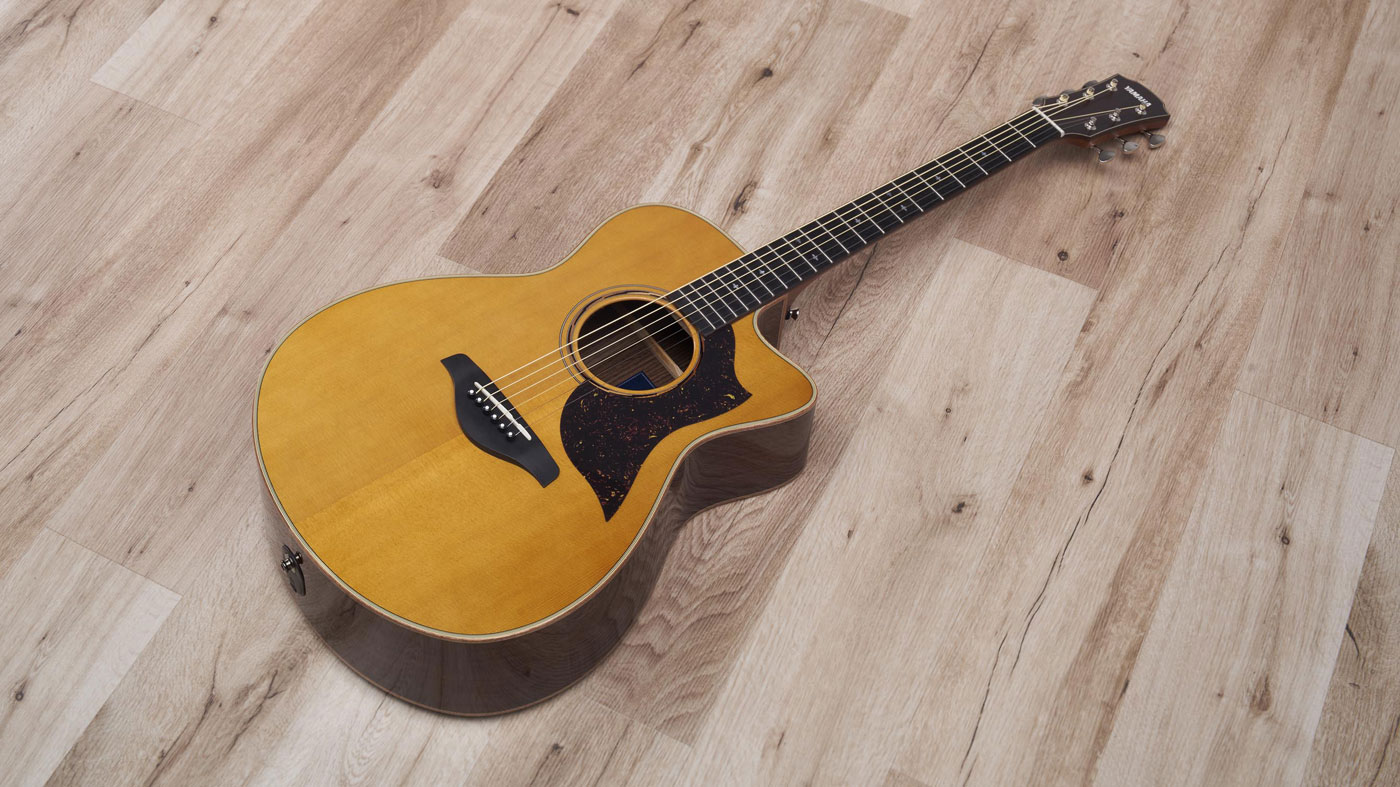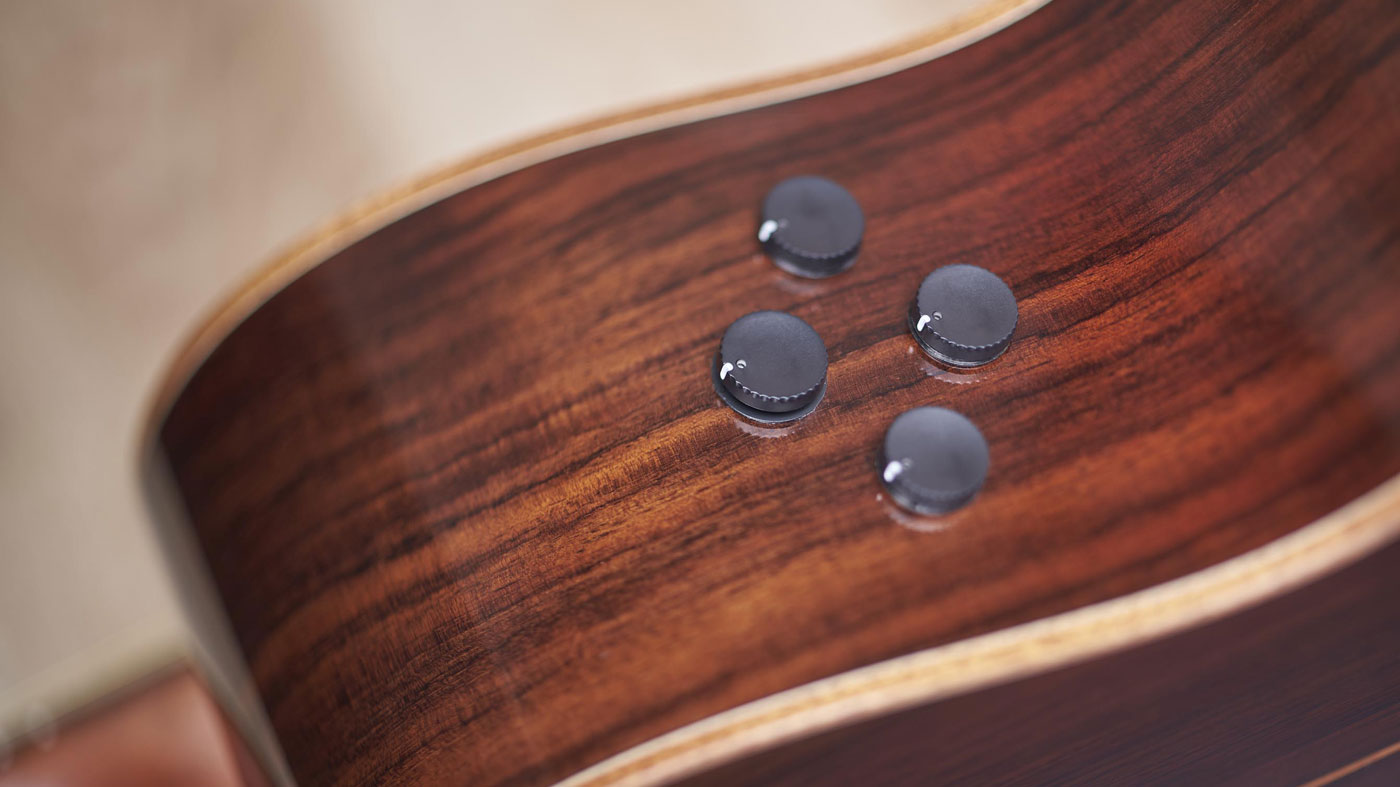NAMM 2017: Yamaha unveils A5 electro-acoustic
A new made-in-Japan flagship for the A Series

NAMM 2017: Yamaha unveils A5 electro-acoustic

Yamaha A5 electro-acoustic guitar

Yamaha A5 controls
NAMM 2017: Yamaha has announced a new flagship acoustic electric guitar model for its A Series range, the A5.
The new model is made in Japan and is actually based on the A6 (stay with us here), which debuted in 2015 as a limited edition instrument. The body can be had in either rosewood or mahogany options, paired with a sitka spruce top. The latter has been treated with the firm's acclaimed Acoustic Resonance Enhancement process, which artificially ages the wood.
The new A5 preamp is also subject to some trickery, using the firm's SRT tech to emulate a variety of mic placements in a studio setting. The guitar comes in a vintage natural finish and will include a hard case. In addition, existing models the A1 and A3, will also be getting an overhaul, with laminate or solid tonewoods respectively and ARE-treated tops.
Check out the full press release for the updated range below.
Yamaha A-Series press release
ANAHEIM (January 29, 2017) — Yamaha today announced significant enhancements to the company's popular A Series acoustic-electric guitars at the 2017 Winter NAMM show.
Chief among these innovations is the debut of the flagship A5 model, which is based on the 2015 limited run A6 model and, like the A6, will be crafted in Japan. The A5 is available with a solid mahogany or rosewood body and features scalloped bracing for increased projection and enhanced bass, as well as a beautiful new vintage natural finish, a new neck finish and a bound headstock with vintage-style tuners. The A5 comes with a hardshell case.
The A5's solid Sitka spruce top benefits from Acoustic Resonance Enhancement (A.R.E.), a patented process that uses precise control of temperature, humidity and pressure to alter the structure of wood at a sub-cellular level, transforming it into the same material as would be found on a guitar that has been played for many years. Benefits include increased resonance, greater midrange and high-frequency responsiveness and bass sustain.
Get the MusicRadar Newsletter
Want all the hottest music and gear news, reviews, deals, features and more, direct to your inbox? Sign up here.
The A5's new preamp features Studio Response Technology (SRT), which models the characteristics of vintage large- and small-diaphragm condenser microphones and the ambience of a professional studio environment, producing remarkably vivid and natural acoustic tone. The low-profile controls include Master Volume, Treble, Bass/Acoustic Feedback Reduction and Mic Blend/Mic Selection.
Yamaha has also significantly updated the A1 and A3 model guitars. Both instruments are available with mahogany or rosewood bodies (the A1 in laminate, the A3 in solid), in either dreadnought or concert shapes, with a choice of vintage natural or tobacco sunburst finishes. Both also feature solid Sitka spruce tops, scalloped bracing and a new neck finish. The A3 model adds an A.R.E.-treated top, an SRT preamp and a hard gig bag to the package.
"The A Series has the distinction of being the first U.S.-designed Yamaha acoustic-electric guitars, drawing on the expertise of and close collaboration with our American guitar team," said Dennis Webster, marketing manager, acoustic guitars, Yamaha Corporation of America.
"These revamped models take Yamaha to the next level by offering extraordinary tone and projection, giving the musician total control over their live performance, while enabling them to cut through the band mix."
Whether on stage, at home, or in the studio, the A Series guitars are the ultimate performance-level instruments, built with Yamaha's legendary excellence.
Pricing and Availability
Yamaha A Series Guitars will ship in April 2017. Prices will range from $965 to $1,365 (MSRP).
Matt is a freelance journalist who has spent the last decade interviewing musicians for the likes of Total Guitar, Guitarist, Guitar World, MusicRadar, NME.com, DJ Mag and Electronic Sound. In 2020, he launched CreativeMoney.co.uk, which aims to share the ideas that make creative lifestyles more sustainable. He plays guitar, but should not be allowed near your delay pedals.












